What is B2B Customer Service? Definition, Best Practices, & Examples
Learn what B2B customer service is, including core components, best practices, examples, and more.
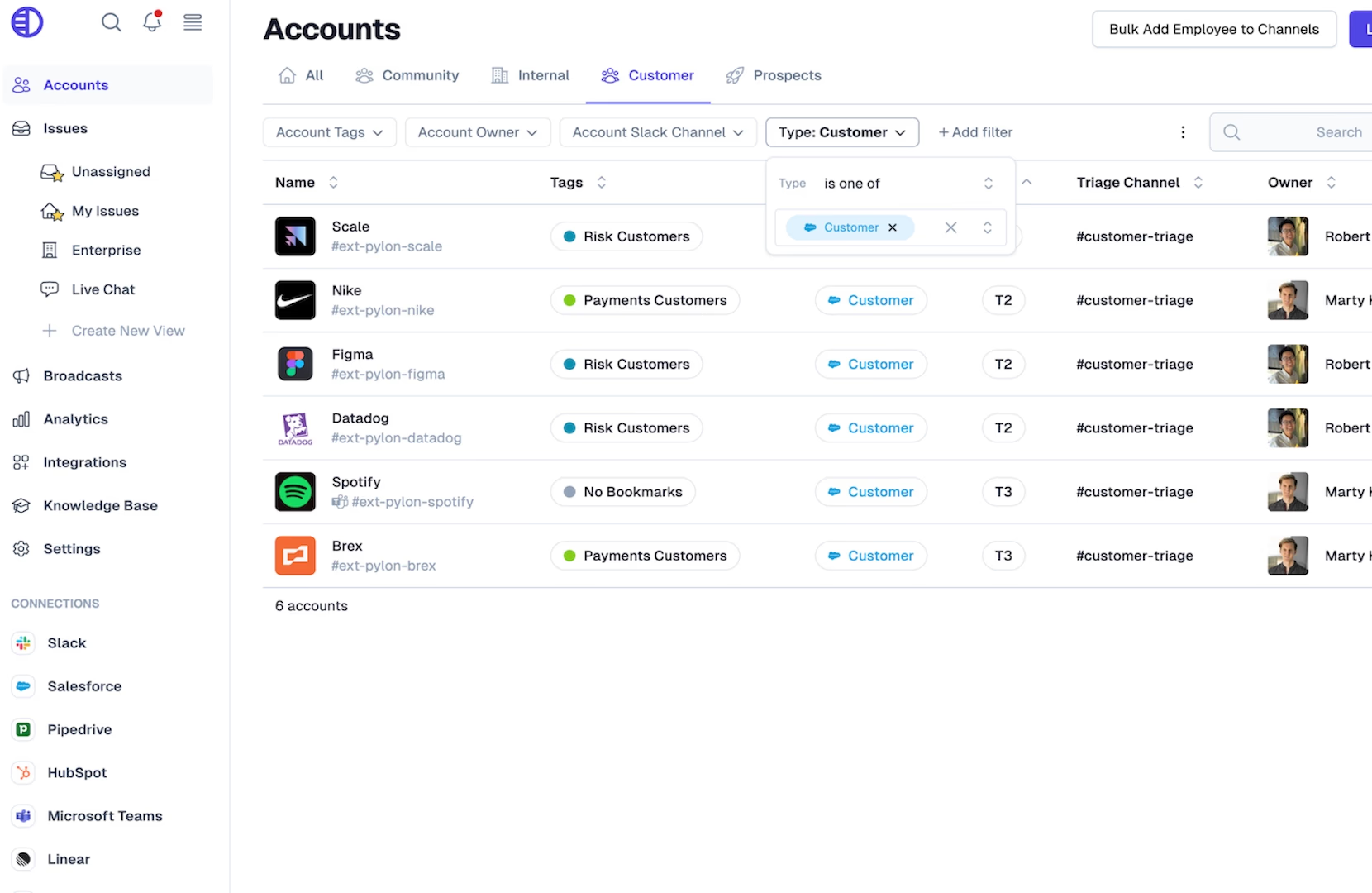
Who’s the most important person in your business? The CEO? Maybe it’s the COO? The answer is neither. You won’t find them in the C suite.
Still not sure? Here’s a hint: Who has the most impact on things like customer experience, retention, and satisfaction?
It’s your B2B customer service reps. Without customers, your business can’t survive. And you can’t count on a steady stream of new customers, either.
You need to both retain your current clients and attract new ones. While your marketing and sales teams can handle bringing in new ones, your customer service team is responsible for helping you keep those you already have.
B2B customer service is all about keeping businesses happy. It’s the support you provide to other companies that use your products or services, making sure they get what they need to succeed.
Unlike customer service for everyday consumers, B2B support is more involved and has longer relationships, more complex issues, and bigger stakes. Think of it as less about answering a quick question and more about building a partnership.
This guide goes over everything you need to know about B2B customer service, including core components, why it’s important, how to succeed, and more.
Why B2B Customer Service Matters
Good service is more than nice to have; it keeps businesses coming back. 86% of buyers say they’d pay more for a great customer experience.
That means your ability to solve problems, offer smart solutions, and build trust isn’t just helpful, it’s a competitive advantage.
Take a SaaS customer support team, for example. If they don’t provide solid support (helping clients integrate their software, troubleshoot issues, and optimize their setup), businesses will find someone else who does.
That’s why B2B customer service is more than just a help desk. It’s a lifeline.
Don’t take my word for it, though. Here are a few eye-opening statistics that highlight just how central great customer service is to your business’s success, regardless of industry or niche:
- According to Salesforce, 80% of customers say that their experience with a company is just as important as its products or services, and 88% of customers say good customer service makes them more likely to buy from a company again.
- A study by PwC shows that 73% of customers consider their experience with a customer before making any kind of purchase decision. Another PwC study shows that 63% of customers would happily share more personal information in exchange for a great customer experience.
- WiserNotify’s study found that 86% of B2B customers would pay more for a better customer experience and that 72% of B2B customers expect vendors to personalize their experience. Delivering a personalized experience means that companies outsell competitors by 30%.
As you can see, delivering a great customer experience isn’t negotiable. But why do so many B2B companies struggle to do that?
It often comes down to not understanding the differences between B2B and B2C customer service and how to design and deliver a positive experience.
How B2B Customer Service is Different From B2C Customer Service
Firms with a “customer service is customer service” view tend not to thrive. That’s because, while it is true to an extent, what works in B2C environments does not always do so with B2B clients.
There are significant differences and failing to understand those can create a fundamental disconnect between your customers and your customer service team (and your business).
1) More people to keep happy
In B2B, you’re not just dealing with one customer—you’ve got multiple decision-makers to satisfy. In contrast, B2C sales are all about delivering a quick, easy, convenient solution to a single person.
2) More personalized support
Businesses have unique needs, so a one-size-fits-all approach won’t cut it. Of course, B2C customers also expect personalization, but it’s easier to tailor the customer experience to a single individual than it is to a brand, multiple decision-makers, and specific buyers.
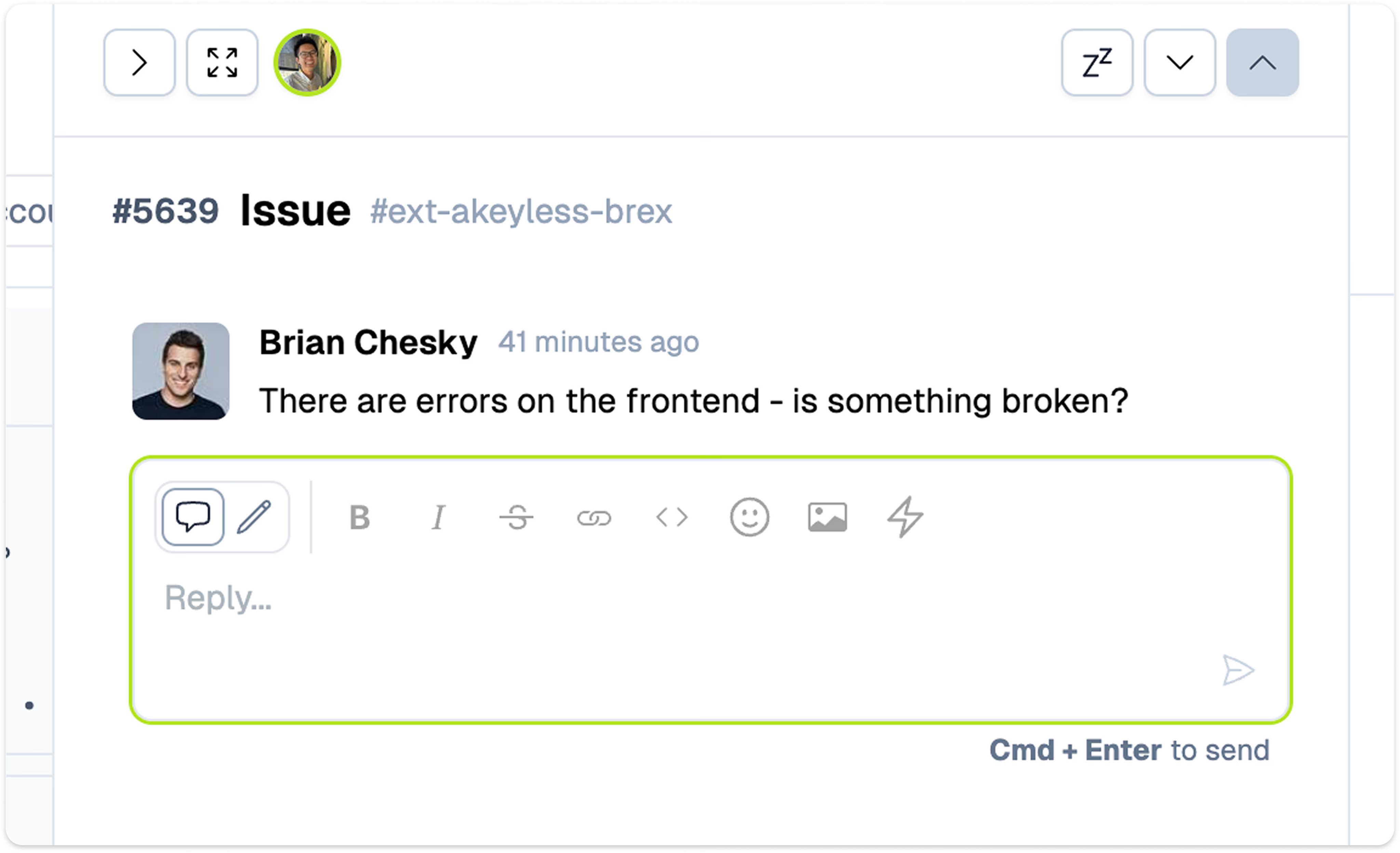
3) More complex issues
B2B problems aren’t as simple as a refund or a product swap. You’re dealing with integrations, compliance, and long-term solutions. The more technical your offering (SaaS, for instance), the more complex the issues will be.
And it’s not just on the customer’s end. You also need to worry about compliance across different states and even countries, all with varying laws and requirements.
4) Higher urgency and expectations
SLAs (service-level agreements) and performance metrics hold you accountable, and while B2C customers might be fine waiting a little while for a solution to their problem, B2B customers need answers immediately because every second costs them money.
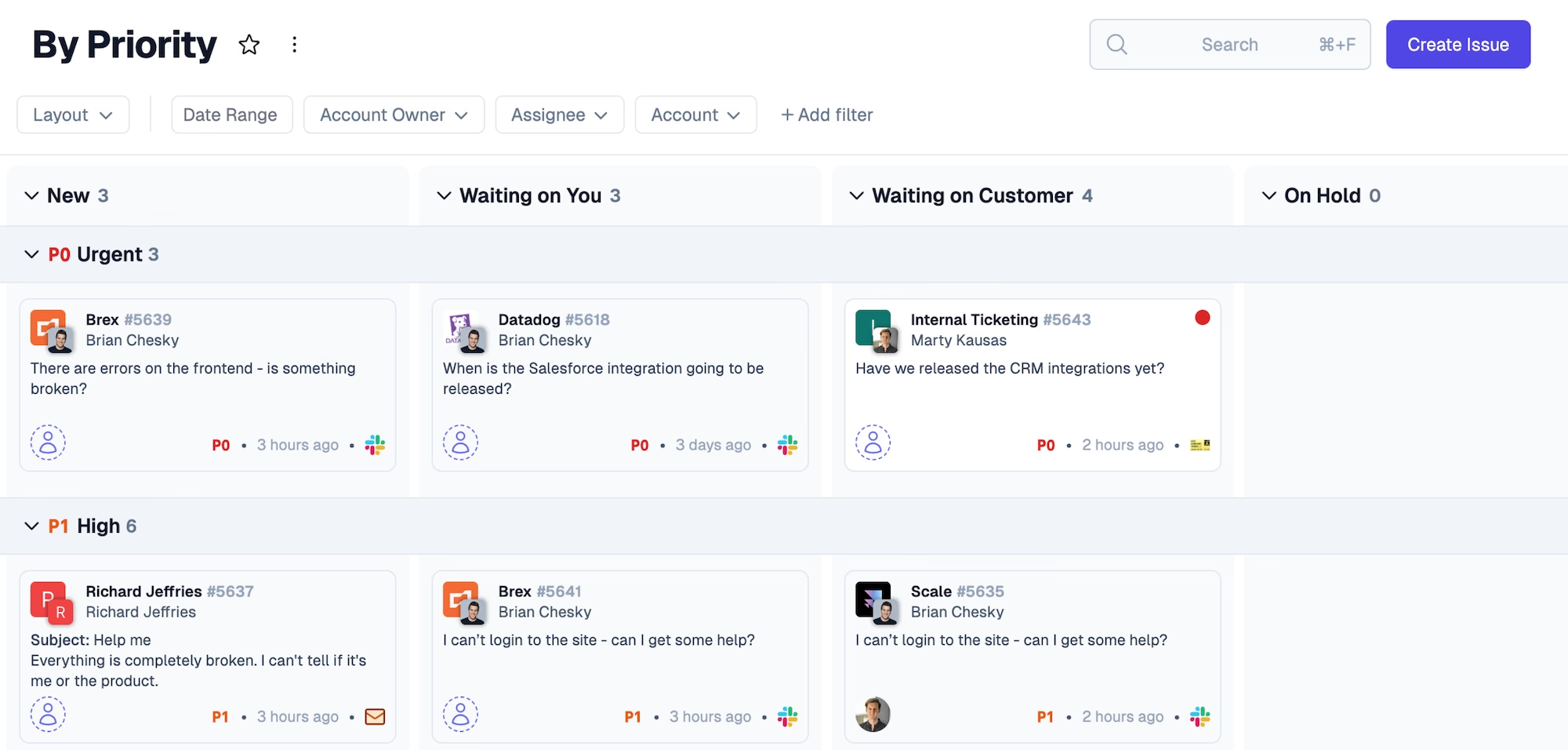
Delay too long and they’ll start looking for another vendor or supplier.
5) Requires stronger relationships
B2B success is built on trust and long-term partnerships, not just quick transactions. A B2C customer might only buy a product once, but B2B clients will be around for years to come (or they’ll go to a competitor to solve their needs because of a negative experience).
B2B and B2C customer service have some similarities but are ultimately very different. Customer support teams, managers, and decision-makers must understand not only those differences but also what makes a great experience.
Core Components of Effective B2B Customer Service
Designing and delivering a positive B2B customer experience requires intentionality, planning, and a solid understanding of what makes long-term relationships work.
1) Communication
No one likes being left in the dark.
Clear, consistent communication, whether through regular check-ins or personalized updates, keeps customers engaged and reassured. However, you need to strike a balance between “helpful communication” and being intrusive.
A constant barrage of emails and updates might seem like it keeps your customers in the know, but it can quickly become overwhelming and encourage them to opt out of notifications and delete unopened emails.
Commit to consistency but resist the urge to go overboard.
2) Relationship building
It’s not just about solving problems; it’s about making customers feel valued. Dedicated account management makes sure clients get the attention they need. Look at relationship-building as retention.
The stronger your relationship with a customer, the greater the chance that they’ll stick around. That’s important for a few reasons, including:
- Companies that value customer loyalty see a 10% to 20% increase in annual revenue and 13% better retention rates.
- Retaining customers saves you a ton of cash. B2B advertising and marketing spending in the US in 2024 was projected to be $59.5 billion.
- B2B companies with successful loyalty/retention programs see a 30% increase in cross-selling and upselling.
3) Omnichannel support
Clients expect support through email, chat, phone, and even video calls. The easier you make it for them to reach you, the better.
According to McKinsey, “B2B customers use an average of 10 interaction channels in their buying journey (up from five in 2016). But sellers offering multiple channels isn’t enough. More than half of our respondents want a true omnichannel experience, one in which they can interact and buy while switching seamlessly across multiple channels. They are likely to switch suppliers if they don’t have a smooth experience across these many touchpoints.”
B2B customer support solutions like we offer here at Pylon make it easy to enable conversational ticketing to support your customers wherever they prefer. Whether over Slack, Teams, email, ticket forms, or somewhere else, we can help you stay on top of customer communications in one unified view.
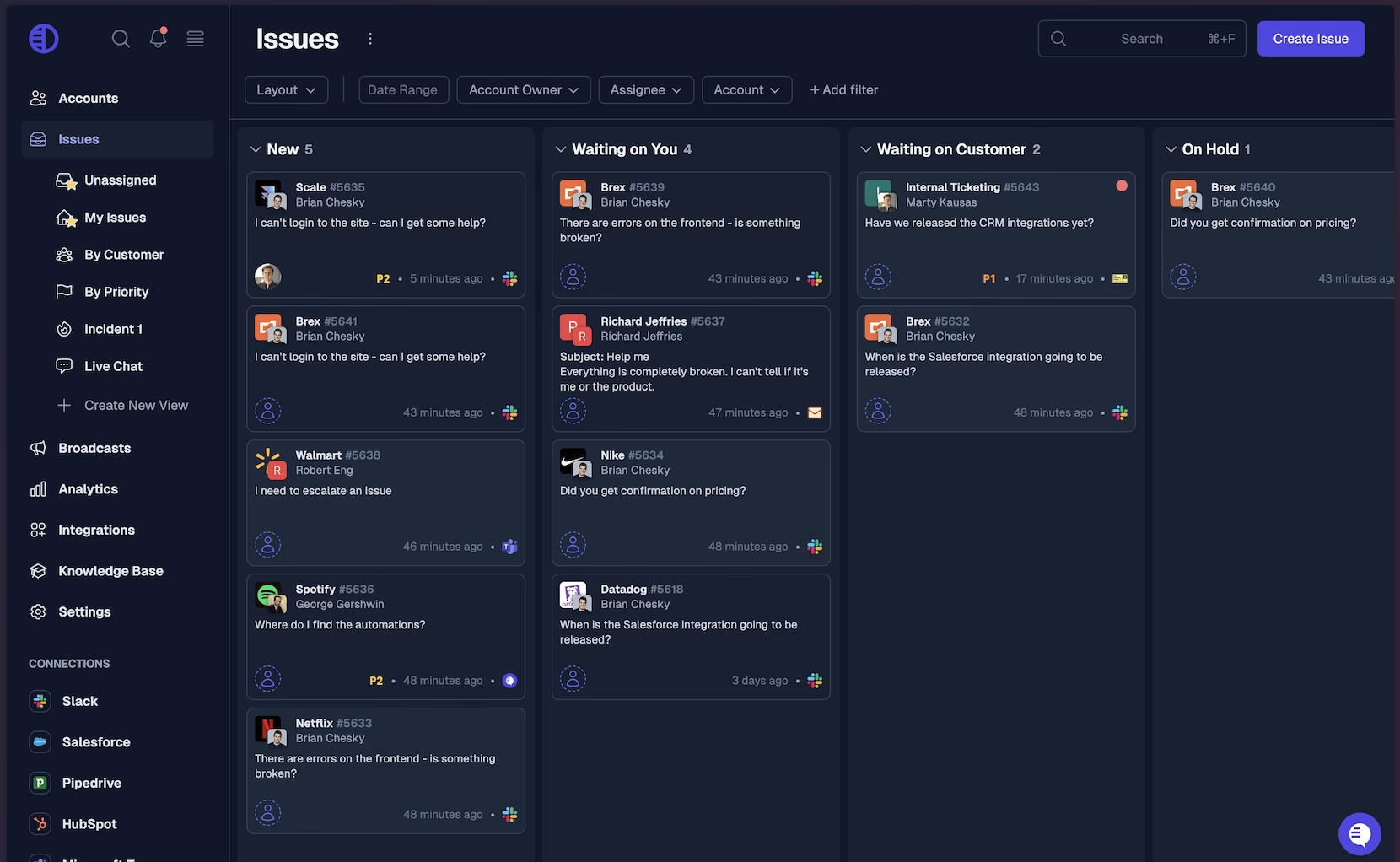
4) Technical expertise
Your support team needs to know your product inside and out. When businesses have an issue, they need an expert, not just a script-reader.
Expect your customer service team to field questions about all aspects of your product/service, from how-to questions to troubleshooting, costs, comparisons to competitors, and more.
This is where it pays to invest in product knowledge training. Your customer service team should be as knowledgeable about your offerings as anyone else in your company, including product development teams.
5) Proactive Solutions
Don’t wait for problems to arise—anticipate them. If you know a client might struggle with a new feature, reach out first.
Often, it’s a smart idea to communicate with customers when any new feature rolls out.
Include how-to videos that walk your customers through using new capabilities or how to connect new features with the rest of their technology stack.
Remember that customer service isn’t just person-to-person. Self-guided learning (tutorials, videos, etc.) goes a long way toward creating a positive customer experience because your customers can find answers to their issues right away rather than having to connect with a service rep.
Mastering these aspects will help make sure your customer service is on point. However, it’s also important that you base your efforts on established best practices.
Best Practices for B2B Customer Service
Delivering a great customer experience shouldn’t mean reinventing the wheel. Best practices are proven guidelines and practices that deliver good outcomes. They also help you implement effective solutions without wasting time and money.
Below, you’ll find some of the most effective best practices for B2B customer service teams.
1) Develop effective onboarding
Think of onboarding as showing a new friend around town. You wouldn’t just hand them a map and wish them luck; you’d walk them through it, pointing out the best spots and making sure they know their way.
That’s what a good onboarding process does. It gives your clients the confidence to use your product or service effectively from the start.
A great onboarding experience is more than a well-written guide or a one-time training session. You need to give your people the support they need when they need it and continue to do so.
Skills development should never end. Provide support through check-ins, how-to videos, and real people to turn to when questions come up. Get this part right, and you set the stage for a long and successful relationship with your customer service reps.
If you’re paying attention, you see the similarities between employee onboarding and client onboarding. That’s because both are about creating strong relationships that stand the test of time.
In both cases, you need to invest time and effort to develop those relationships, but the dividends you earn will far exceed your investment.
2) Understand customer needs
If you don’t understand your customers' businesses, how can you help them succeed? B2B relationships thrive on deep understanding.
That means knowing not just what your clients do but how they do it, why it matters, what challenges they face, and what success looks like for them. It’s about listening more than talking, asking smart questions, and paying attention to the details.
Imagine you’re supplying software to an e-commerce company:
- Do they need fast response times because they handle high-volume transactions?
- Do they struggle with analytics and need better reporting tools?
The better you know their world, the more valuable your service becomes.
Remember: You’re not selling a product or a service. You’re selling solutions to your clients’ problems and pain points. Doing that requires understanding what those hurdles are in the first place.
3) Offer tailored solutions
One-size-fits-all doesn’t work in B2B. Every business is different, and your customer service should reflect that.
Some clients might prefer support over Slack since it’s where they already work day-to-day and they can get faster responses compared to other channels like email.
Others want scheduled phone calls or detailed email reports. Give them options, and they’ll appreciate the flexibility.

This is where true omnichannel communications enter the picture, but remember what McKinsey found. It’s not enough to hack together multiple communication solutions. Your customers want a true omnichannel experience and seamless capabilities.
Ultimately, a tailored approach isn’t just about communications. It’s real-time problem-solving.
Don’t force clients into a rigid system if they have unique needs. Adapt your approach to fit their business. That’s how you move from being just a vendor to being a true partner.
4) Take advantage of today’s technologies
Great customer service never happens by accident. It’s always intentional, and it’s built on smart systems and tools.
Platforms like Pylon help teams stay organized, track customer interactions, and anticipate problems before they escalate.
Look at it this way: how many successful automotive mechanics make a living using just one wrench? None. They have a well-stocked toolbox, so they always have the right tool for the job. B2B customer service is no different.
Automation and AI can also play a huge role. Chatbots can handle routine questions, freeing up your team for more complex issues. Real-time analytics can help spot patterns and prevent issues before they even happen. Integrations allow you to do things like connect your CRM and helpdesk.
The right tech doesn’t replace good service—it makes it even better.
5) Cross-team collaboration
Who’s responsible for customer service? If you answered “the customer service department”, you’re wrong.
The truth is that customer service doesn’t belong to just one department. When a client has an issue, they don’t care if it’s a support problem, a sales issue, or a product bug; they just want it fixed.
That’s why collaboration and communication between teams are so important. However, that only happens when you tear down some of the walls that have traditionally separated sales from support and development teams.
The best companies break down silos between departments. Sales, product, and support should work together to give customers a seamless experience.
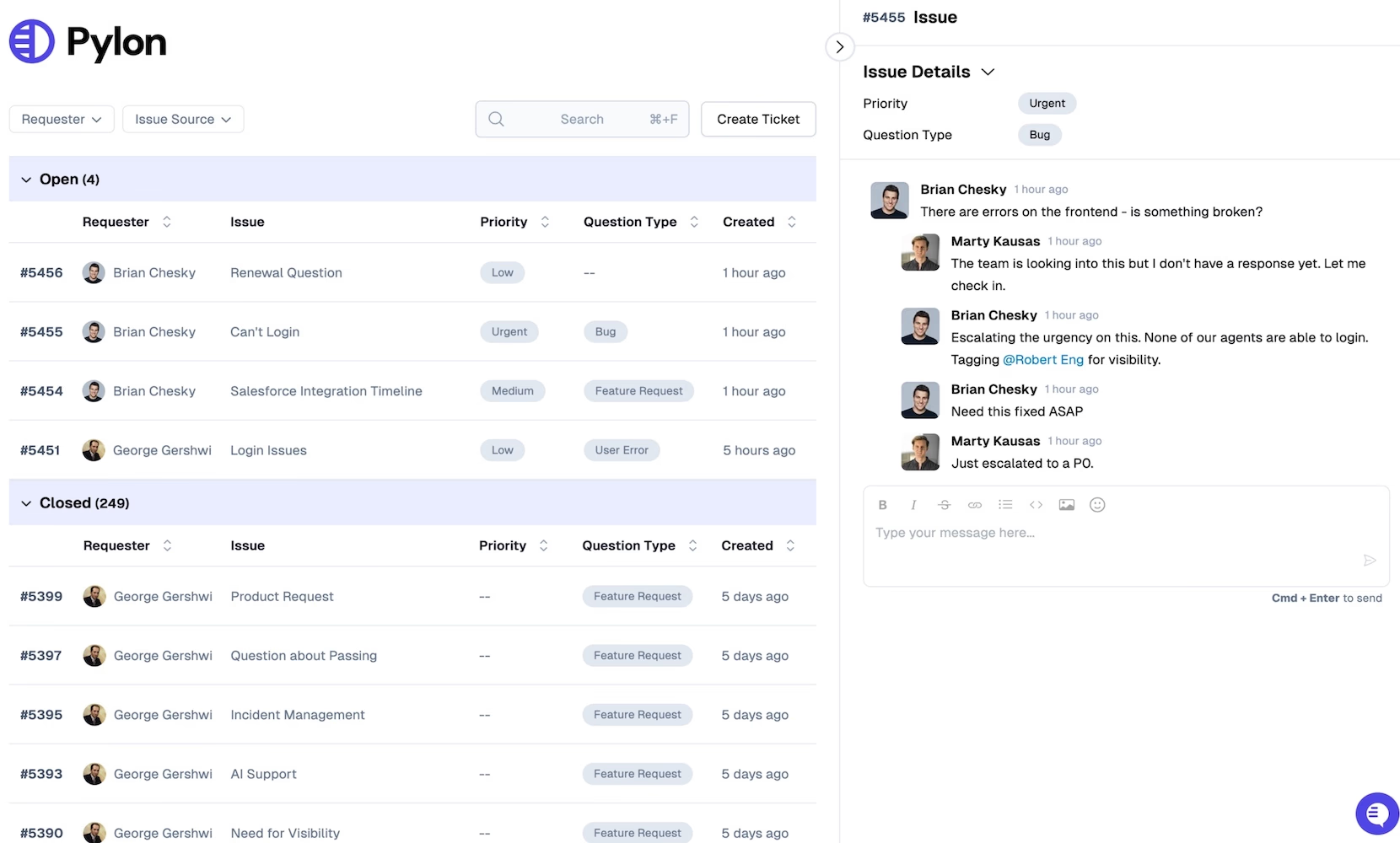
For example, if a customer has a recurring issue, the product team should know about it because chances are good that other customers do too, and it’s affecting product/service adoption.
Another example: if a contract is up for renewal, the support team should be aware, since great support is likely to earn repeat business.
The more aligned your teams are, the smoother the customer experience.
6) Build a knowledge base
Customers don’t always want to wait for an answer. They want to find it themselves because it’s often faster than waiting for a rep, and sometimes it’s easier because they know what they’re looking for.
A well-organized knowledge base, like we can help you create here at Pylon, with FAQs, troubleshooting guides, step-by-step tutorials, and other templates, makes that possible.
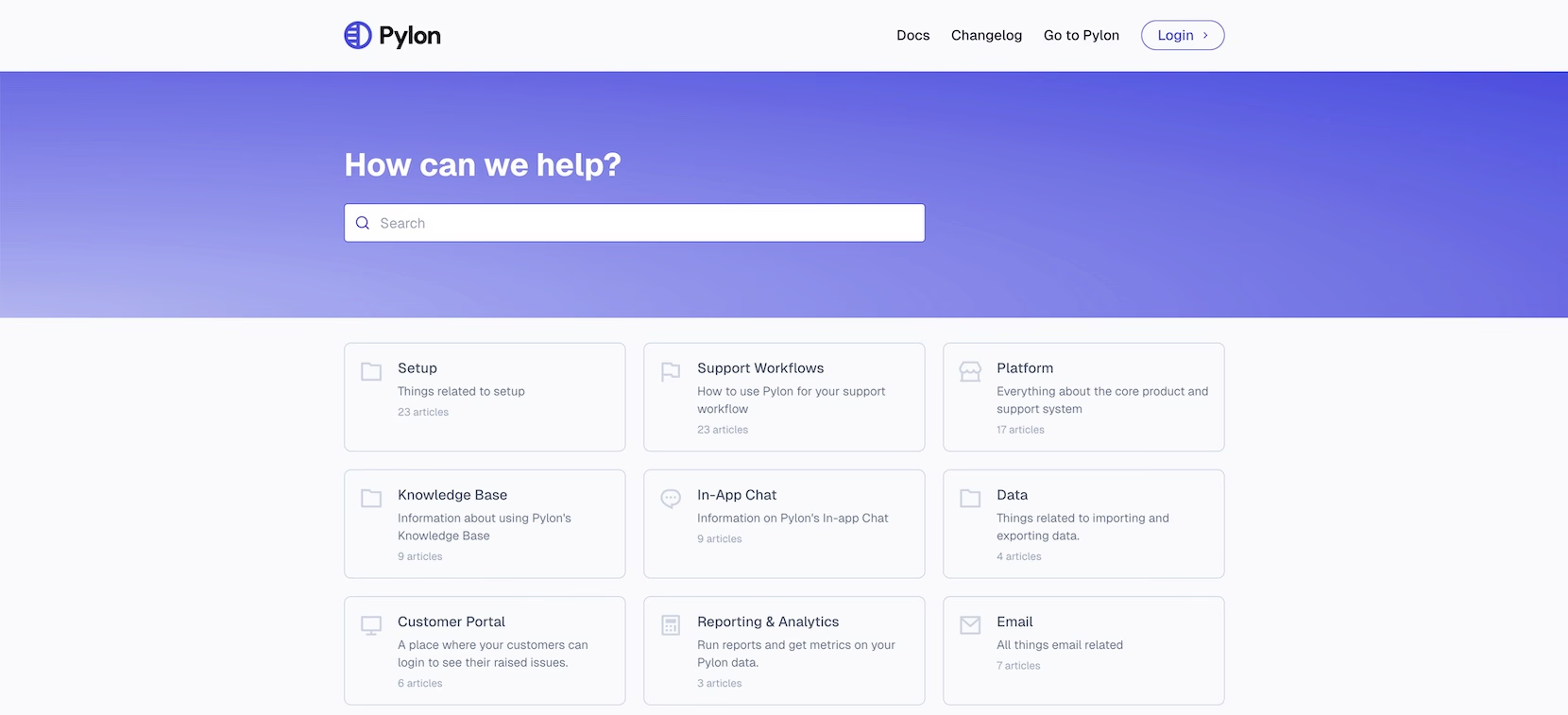
It’s like having a self-serve coffee station instead of making people wait for a barista.
The trick is keeping it updated and easy to navigate. Nobody wants to dig through outdated articles or vague instructions. Invest in making your knowledge base clear and comprehensive and keeping it refreshed with new information.
Looking for inspiration? Check out some B2B knowledge base examples here.
7) Create an automated support chatbot
Let’s be honest; nobody likes waiting on hold, and that includes your customers. Roughly 60% of customers will hang up if they’re on hold for just one minute.
Thankfully, modern tools can help streamline the support process, so your customers never have to wait, even if your human reps are all tied up.

AI-powered chatbots and automated workflows can handle simple issues instantly, making life easier for both customers and your support team.
They can walk users through common problems, suggest relevant articles, and even escalate complex cases to a human agent when needed.
But AI isn’t just about improving efficiency. It can also help you gain important insights. Smart automation tools can track customer interactions, flag recurring issues, and help your team be more proactive.
When used right, AI enhances human support rather than replacing it.
If you’re interested in creating automated support for your B2B business, check out our solutions at Pylon or book a demo to see how we can help.
8) Gather feedback regularly
You may know the saying usually attributed to Peter Drucker: “You can’t improve what you don’t measure.”
Gathering customer feedback through surveys, direct conversations, or analyzing support trends helps you understand what’s working and what’s not.
Think of it like a chef tasting a dish before serving it. It’s impossible to season it correctly without knowing how it tastes, and that can lead to a less-than-stellar experience for diners.
Of course, you can access all the information in the world and it won’t do any good. The key is to actually act on the feedback. If customers consistently struggle with the same issue, fix it.
If they love a particular aspect of your service, double down on it. Feedback is a map to improving your product or service and amplifying what makes it great in the first place.
With these best practices, you’ll be better positioned to deliver a great customer service experience. However, don’t neglect the role of technology in this process.
Technologies & Tools to Enhance B2B Customer Service
We’ve touched on technology a couple of times, but given how central it is to customer service success, it bears further scrutiny. We’ll explore some of the most important items your tech stack should include if you want to improve your B2B customer service.
1) B2B support systems
Think of a great B2B support system like the radar screen in an air traffic control tower. It helps you keep track of everything (customer interactions, issues, service history) so nothing falls through the cracks.
Platforms like Pylon centralize all of this, giving your team a clear view of client needs and past conversations. When a customer calls, you’re not starting from scratch; you already know their history, challenges, and expectations.
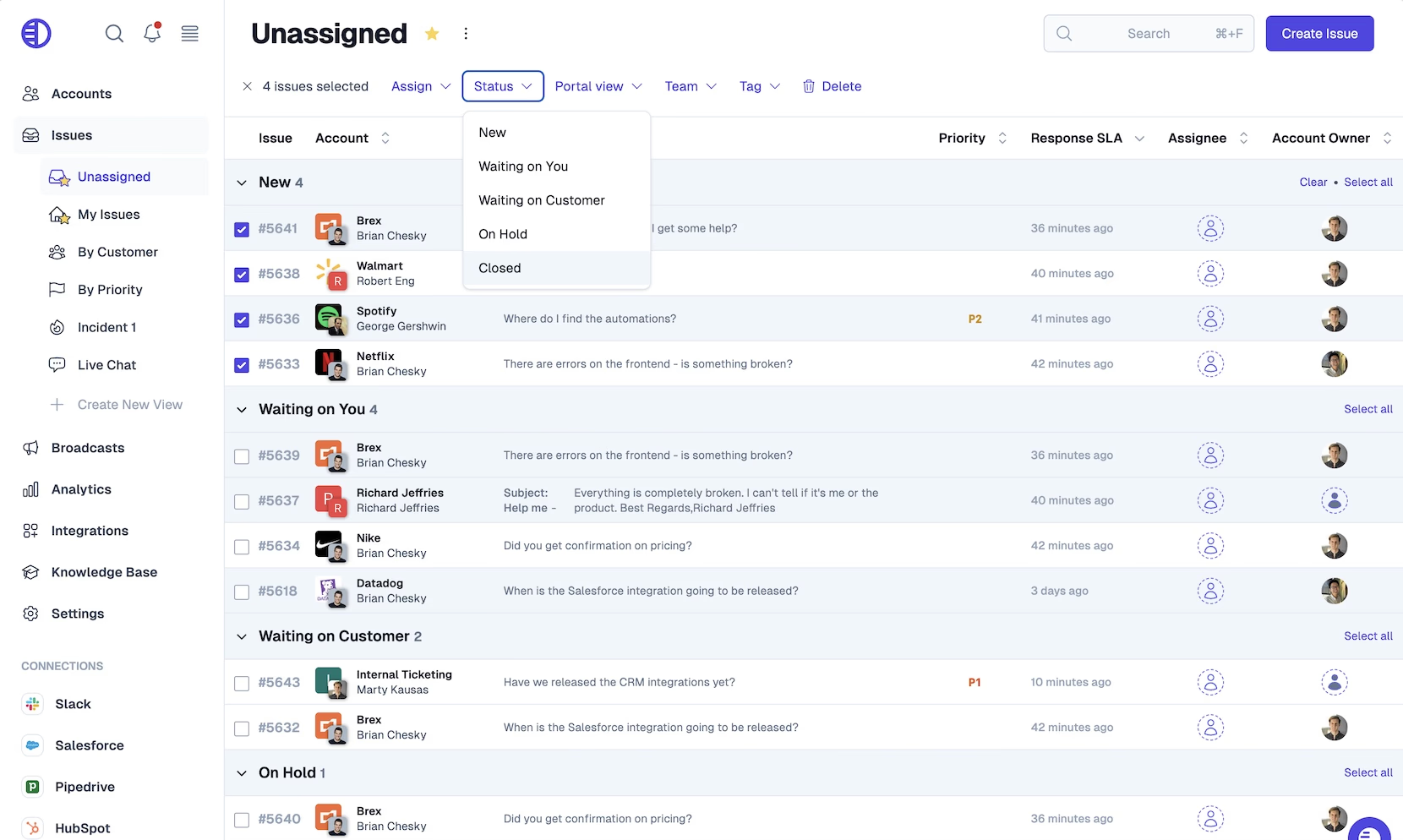
A strong support system also gives you seamless collaboration across teams. Sales, customer success, and technical support can all access the same information, making sure clients don’t have to repeat themselves every time they reach out.
That kind of continuity builds trust and keeps businesses coming back.
2) AI & automation
AI is everywhere today, and that can make it feel like a gimmick. It’s not. The truth is that artificial intelligence and automation are changing the way customer service works.
AI customer support software includes automated workflows, smart chatbots, and predictive analytics that help companies deliver faster, more effective support. Instead of waiting in a queue for the answer to a basic question, customers can get instant responses from AI-powered systems that understand context and intent.
But AI’s real magic isn’t just in automation, no matter how much that might free your team to focus on what they do best. Instead, it’s providing your people with important insights.
By analyzing patterns in customer behavior, AI can predict issues before they happen. If a company consistently reaches out about the same problem, the system can flag it, prompting proactive outreach before frustration sets in.
Of course, AI can’t (and shouldn’t) handle everything. The key is balance. AI should handle the routine, but when things get complex, customers still want a human on the other end of the line.
There’s also the fact that humans are still the best at handling complicated or sensitive issues. The best customer service teams know when to automate and when to communicate directly.
3) Integration & analytics
Data is powerful, but only if you know how to use it. Modern customer service requires doing more than just reacting when a customer has a problem. You need to anticipate them.
Integrations with CRMs, analytics tools, and other business software let you connect the dots and make smarter decisions.
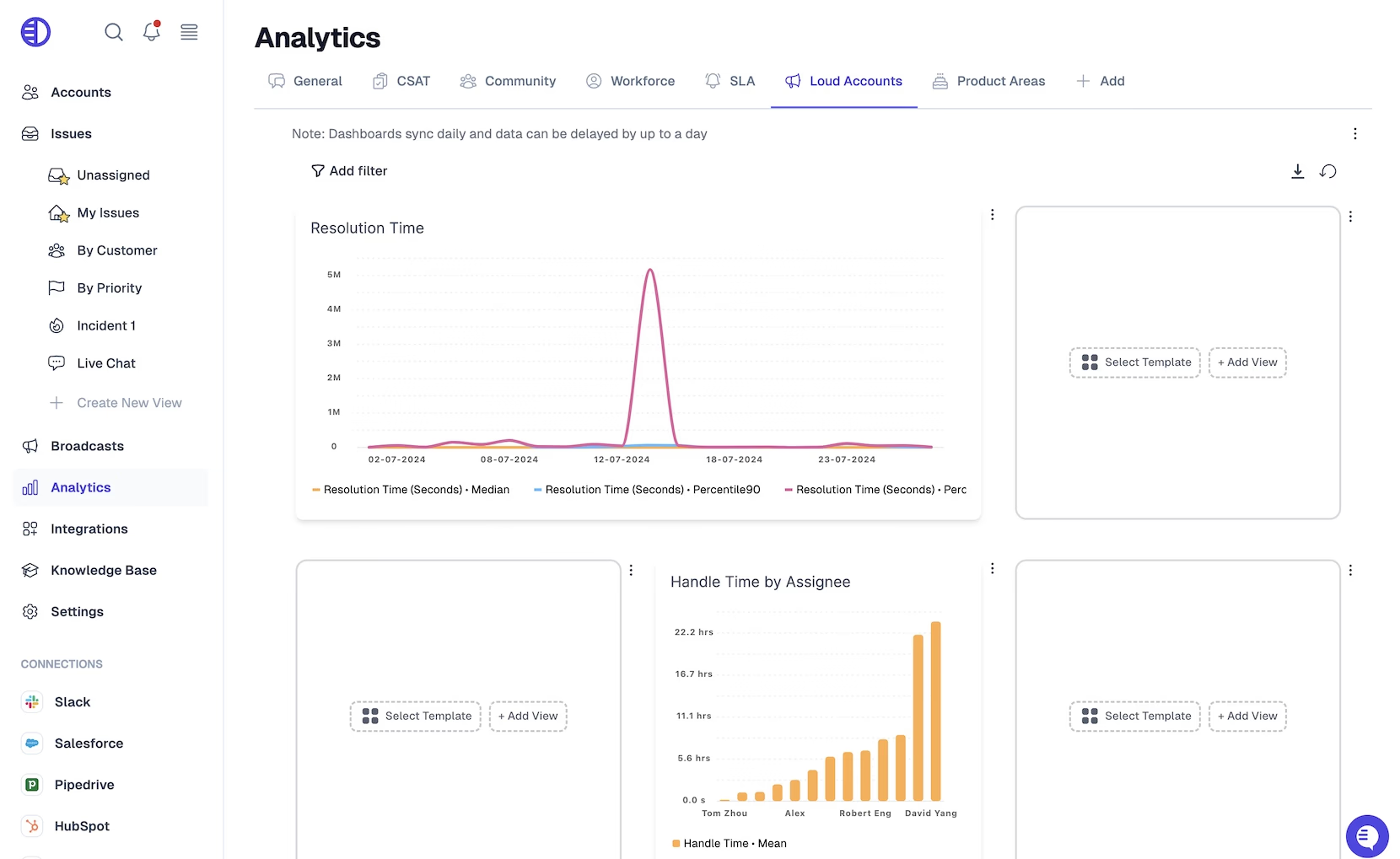
For example, let’s say your analytics platform notices that a particular client has been submitting more support tickets than usual. That might be a sign that they’re struggling with your product or that they’re getting ready to switch to a competitor.
A proactive account manager can step in, offer customized support, and turn a potential problem into a renewed commitment (a retained customer, which means reduced costs and improved ROI).
Good analytics also help teams measure what’s working and what’s not:
- Are response times improving?
- Are specific types of issues happening more frequently?
By tracking trends, you can refine your service approach and continuously improve.
4) Omnichannel Support
Omnichannel communication has come up several times in this article, and for a very good reason.
Today’s B2B customers don’t just pick up the phone when they need help. They might email one day, use live chat the next, and send a message through Slack the day after.

The best companies make sure that no matter how a customer reaches out, they get the same seamless experience. Omnichannel support means integrating all these channels so that conversations don’t get lost.
If a customer starts a chat on your website and then follows up with an email, they shouldn’t have to explain everything all over again. And if they do, chances are good that they’re going to be more than a little frustrated.
With the right tech in place, your team can pick up right where they left off, making the experience painless.
The right tools and tech will help improve your success. However, there’s more to it than that. You also need to measure what’s working so you know where to focus your efforts.
How to Measure Success in B2B Customer Service
You can follow every step in this article, implement every best practice, and integrate all the cutting-edge technology you want and still find that you’re falling short when it comes to B2B customer support.
In most cases, that’s because you’re overlooking one key element: measuring your success.
Measurement is a pretty central component of replicable success. It lets you identify what’s working, what’s not, and how close to your goals you’ve gotten.
It helps you understand performance (good and bad), identify what needs to be improved, and make informed decisions that drive growth and sustainability.
That probably all makes sense. So why do so many businesses struggle? It comes down to not knowing which metrics matter most, failing to get (and act on) feedback, and being unable to make data-driven improvements.
Key performance metrics
Want to drill down into your customer service performance? Then it's essential to track support KPIs. These three metrics will give you the most accurate picture.
Customer Satisfaction (CSAT)
CSAT measures how happy clients are with your service. The higher the score, the more satisfied they are. However, what it doesn’t tell you is why your customers are more or less satisfied.
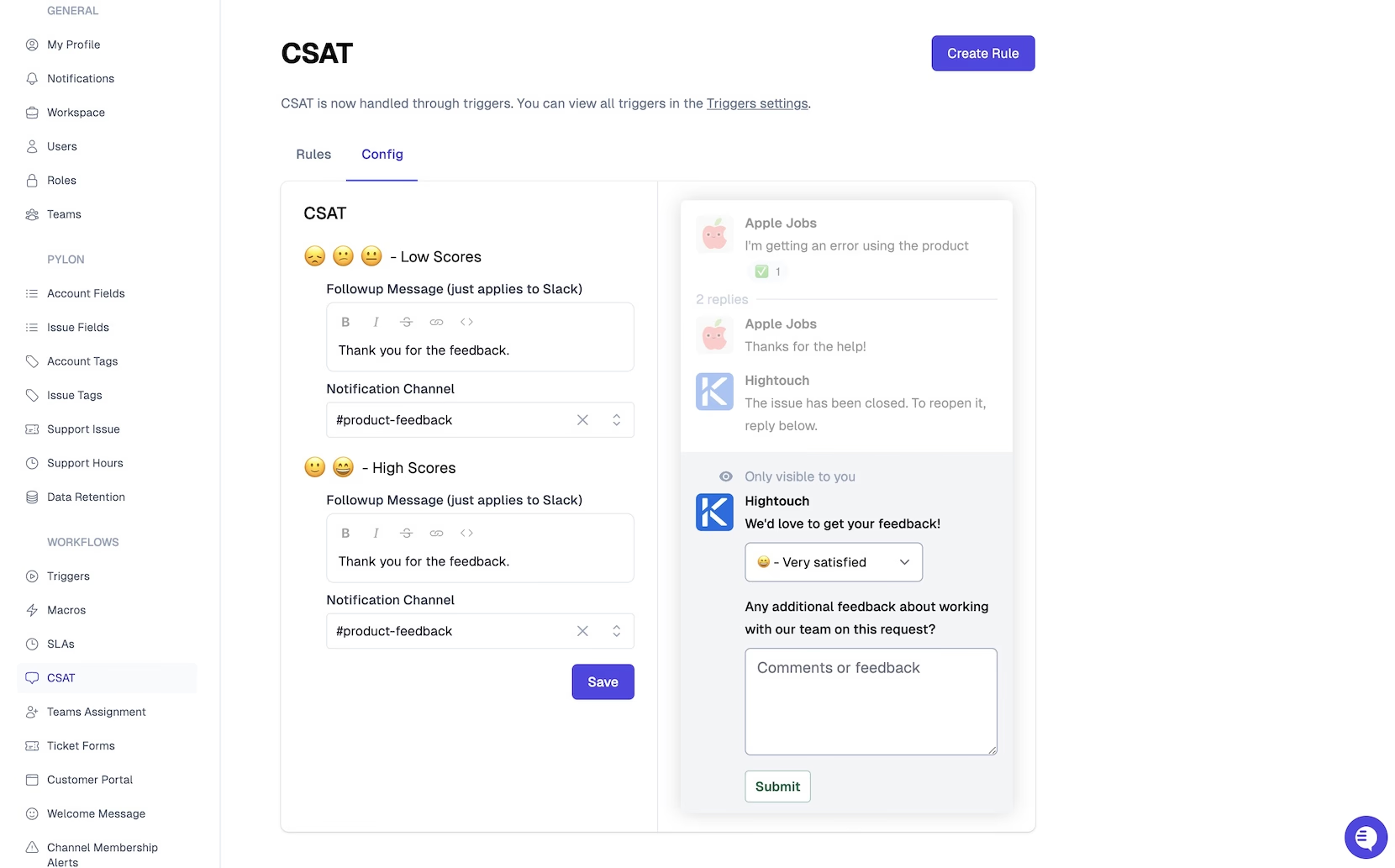
Net Promoter Score (NPS)
Your NPS score gauges customer loyalty and their likelihood to recommend you. The more likely they are to become an advocate on your behalf, the more loyal they are, and the greater their lifestyle value to your brand.
Churn Rate
Churn happens. It’s the nature of the beast, so to speak. Your churn rate tracks how many customers you’re losing, but you can also use it to tell why they’re jumping ship.
Getting customer feedback
Regular surveys and direct conversations help fine-tune your approach. CSAT, NPS, and Customer Effort Score (CES) surveys allow your customers to provide direct feedback about their experience with your business.
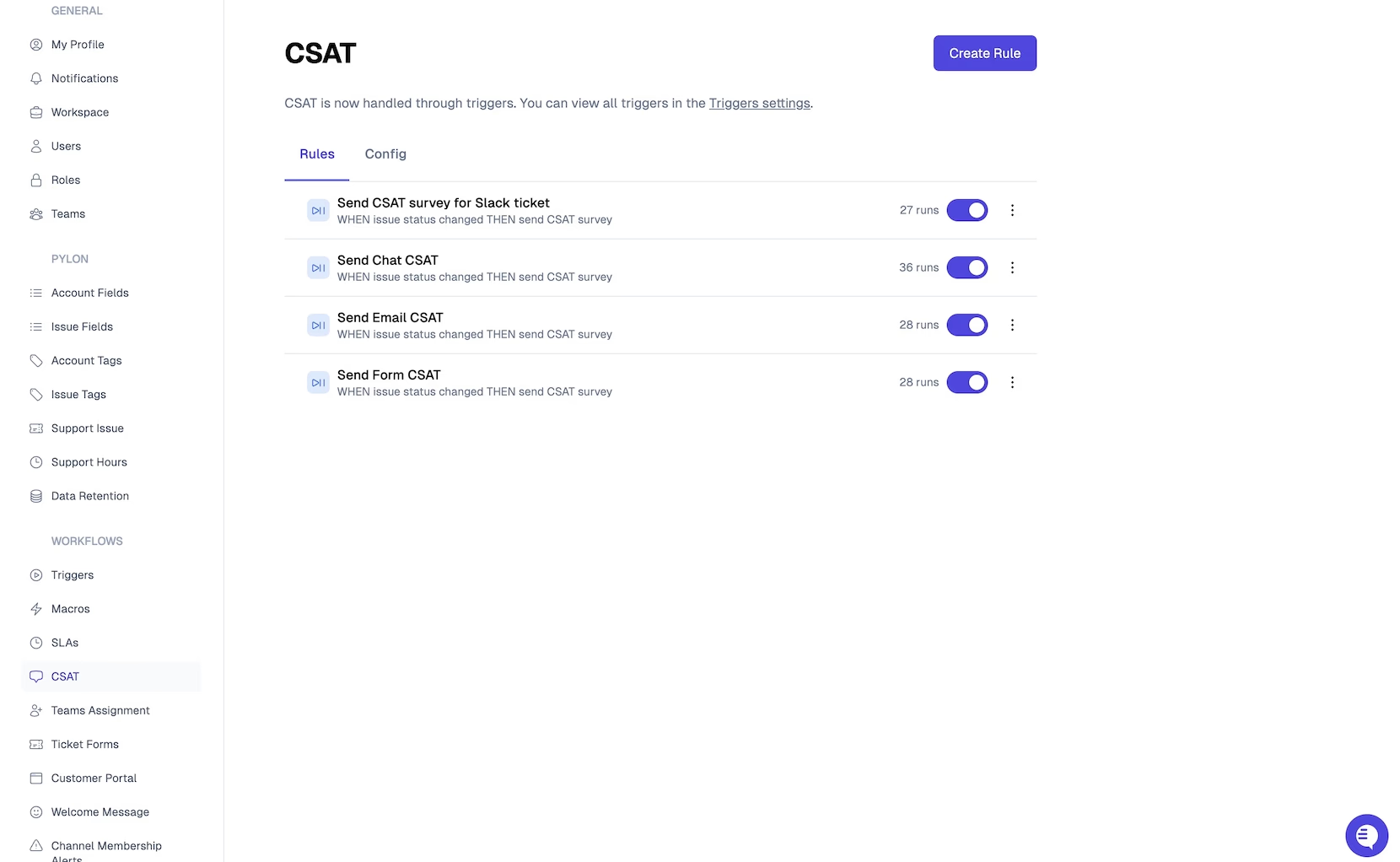
Other direct feedback methods can also help, like exit interviews, feedback widgets, and customer reviews. You can then tap into that information to measure success (or lack thereof).
Data-driven improvements
Use the information from surveys and other direct feedback methods to make informed decisions about changes that result in improvements.
For example, if NPS scores dip, it’s a sign that something needs to change, whether it’s response times, training, or proactive outreach.
Depending on your method, you could get access to more actionable insights, like a lack of customization in SaaS dashboards or a lack of compliance with specific regulations.
Real-World Examples & Case Studies of B2B Customer Service
Here are some examples of B2B companies with great customer service, including their challenges, the solutions they implemented, and the results.
Case Study 1: How Pylon Boosted Efficiency, Collaboration, and Employee Satisfaction at Material Security
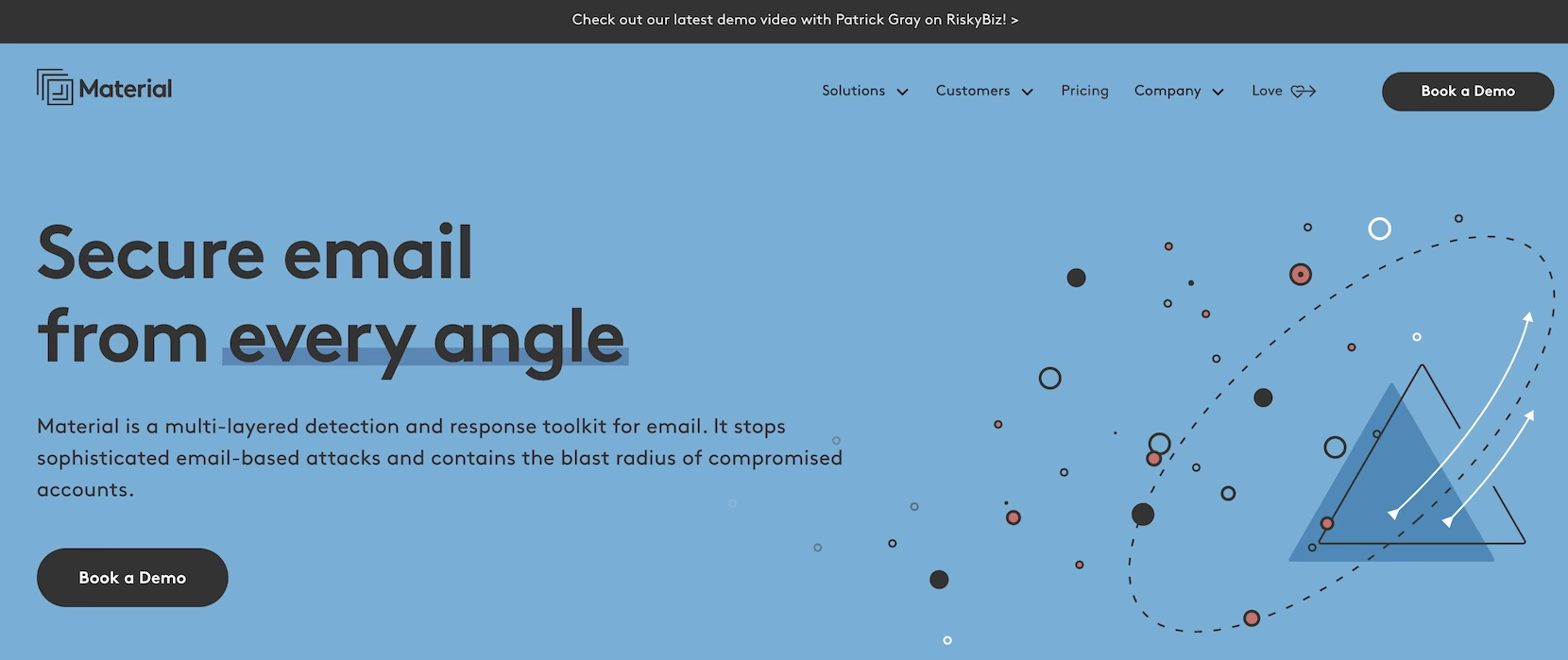
Material Security, a company specializing in productivity suite security, needed a customer support solution that could scale without compromising its personalized service approach. They ultimately selected Pylon for its flexibility, modern interface, and seamless multi-channel support capabilities.
Before implementing Pylon, Material Security managed customer support primarily through Slack, which was very challenging to scale. Legacy support tools like Zendesk were considered but dismissed because they often required dedicated operations teams for implementation and maintenance and lacked native Slack integrations.
Pylon addressed these challenges by offering a user-friendly interface, customizable workflows, and robust integrations with existing systems such as HubSpot and Linear. This allowed Material Security to maintain its high-touch support model while effectively scaling its operations.
>> Read more about how Pylon helped Material here
Case Study 2: How Rootly Adopted Pylon Beyond Support
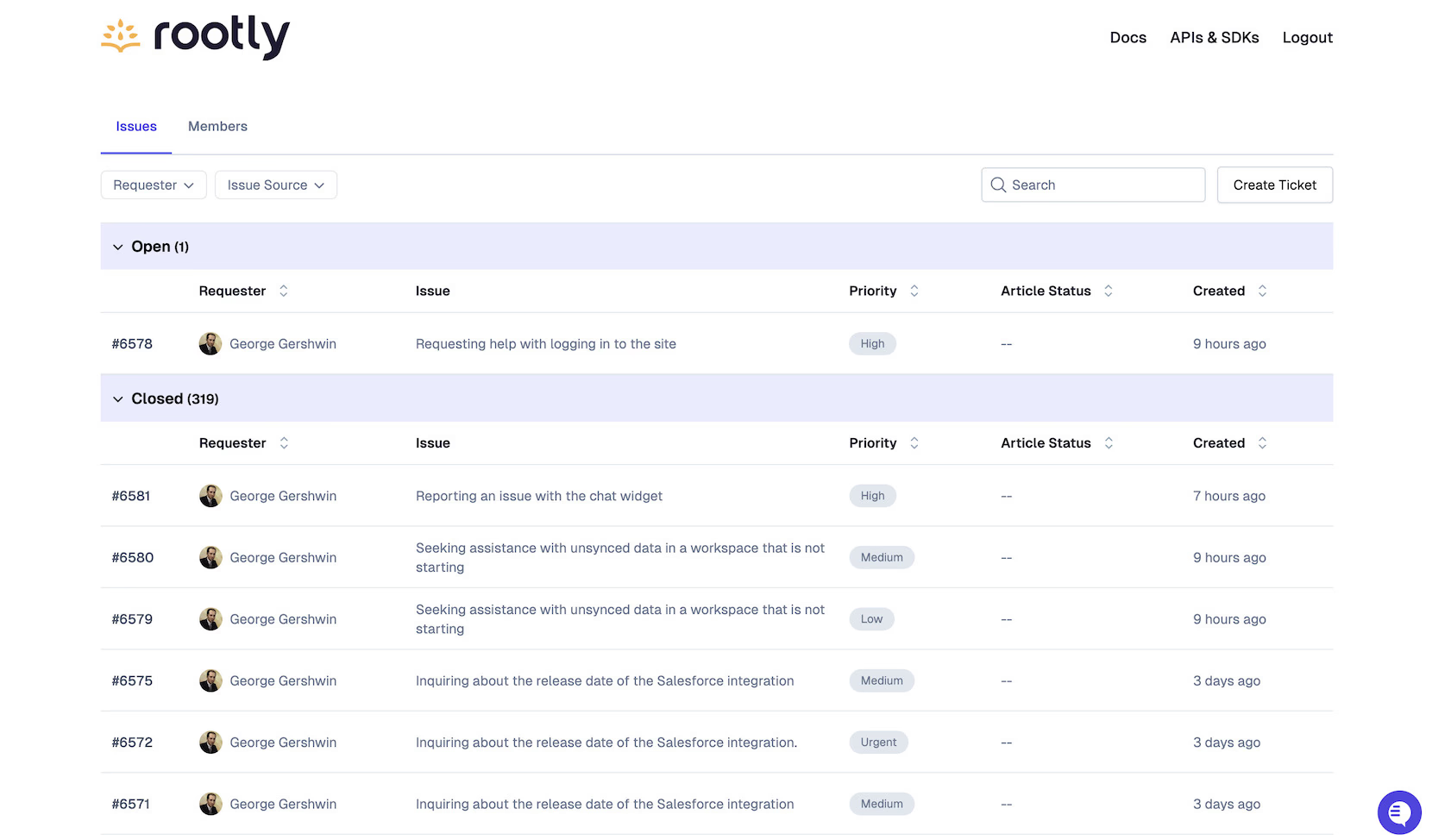
Rootly, an on-call and incident response platform serving enterprise clients like LinkedIn, Lattice, and Canva, needed a customer support solution that could efficiently manage multiple channels while maintaining high service standards.
After evaluating multiple other platforms, Rootly tapped Pylon for its native Slack integration and comprehensive features, including a Customer Portal and Knowledge Base.
The transition to Pylon let Rootly roll out omnichannel support across private Slack channels, in-app chat, email, and a customer portal (all accessible from a unified interface).
The Knowledge Base allowed for the quick creation of self-service content, letting customers find answers independently.
The integration didn’t stop there. It extended beyond the support team, with departments like Marketing, Product, Leadership, Sales, and Engineering using Pylon to track conversations and issues to deliver seamless customer support.
>> Learn more about how Pylon improved Rootly’s B2B customer service here
Future Trends in B2B Customer Service
Customer service looks very little like it did even just a few years ago, and it continues to evolve. Understanding future trends will help you adapt on the fly so you can always exceed customer expectations.
Here are some trends to look out for in the future of B2B customer service:
- AI and automation: More companies will use AI-driven chat and predictive analytics to improve service and scale customer support capabilities.
- Smarter data usage: Big data will help businesses anticipate customer needs before they even ask.
- Seamless omnichannel support: Expect more businesses to integrate phone, chat, email, and social support.
- Hyper-personalization: With better tech, companies can offer highly tailored solutions.
- Emerging innovations: IoT, blockchain, and new tools will enhance transparency and efficiency.
Building a Better B2B Customer Service Experience
B2B customer service goes far beyond answering questions. It’s about delivering an outstanding experience and building relationships that help your business and clients thrive.
When you adopt a strategic customer service approach, anticipate problems, and use smart tools, you’re not just providing support, you’re creating loyal customers who’ll stick with you for the long haul.












